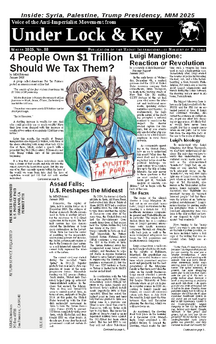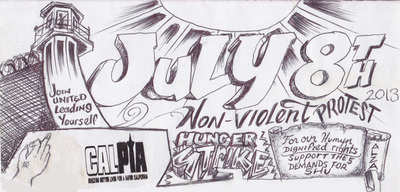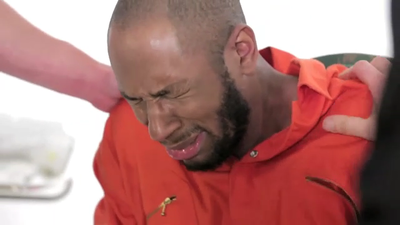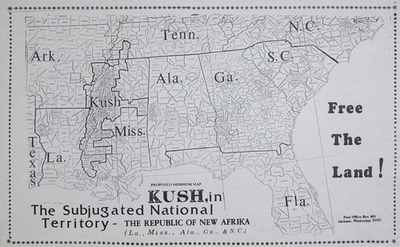
MIM(Prisons) 2013 Congress Summary
MIM(Prisons) recently concluded our annual Congress, where our membership came together to realign our strategic orientation to continually improve our productivity and effectiveness supporting the anti-imperialist struggle behind bars. This report is to give our readers a better idea of how MIM(Prisons) supports their struggles, and our plans for the upcoming year.
Correspondence
Although we are not able to respond personally to every letter we receive, we have a lot of mail going out to prisoners including bi-monthly ULK, form letters addressing frequently asked questions, study group and campaign mailings, and books, magazines and study packs. On average we are sending out at least one piece of mail for every letter we receive. In addition to our correspondence through the mail with prisoners, the writings from Under Lock & Key are on our website www.prisoncensorship.info. Traffic to the news on our website has doubled this year!
One way that we track our success in expanding influence inside Amerikan prisons is by counting subscribers to Under Lock & Key. We know that most copies are read by many people, but the number of subscribers is a good indicator of our influence and growth from year to year. We want to see our subscriber list grow so that we can ensure each issue reaches as many people as possible. This is a key tactic to spread revolutionary education and build the anti-imperialist movement.
Since the formation of MIM(Prisons) we have seen a steady increase in our numbers of ULK subscribers, but this year that trend reversed. Between our last annual congress in July 2012 and the congress this year, our readership is down by about 17%. After continuously increasing our number of subscribers for years, we may have finally hit a ceiling. In the last year, MIM(Prisons) volunteers have not made any significant changes to the way we work with prisoners. We write more on how to overcome this challenge below.
United Struggle from Within
A large part of our discussion at Congress was centered around our support for the anti-imperialist mass organization for former and current prisoners, United Struggle from Within (USW). Where MIM(Prisons) can’t physically do necessary organizing work, USW is our feet on the ground. This section outlines some of the successes and progress of USW, as well as deficits where there needs to be improvement.
Compared to our USW membership statistics from Congress 2012, USW appears to be getting larger and more stable. This is a huge advance. The struggle to liberate people of the world from capitalism and imperialism can’t just be taken up when it sounds fun or exciting, or when you have the spare time. The more comrades inside who understand this, and make a long-term commitment to doing as much as they can to liberate the most oppressed people in the world, the better off we will all be in the long run. We encourage those who have dabbled in USW work to keep up your commitment, and continually check page 12 of Under Lock & Key for ways to plug in. If you’ve already gotten ten people to send out grievance petitions, why not get ten more, or try to push it to the next level? If you’ve already got a local study group going, why not send us a report on how you did it so others have a better idea how to start one up in their conditions? To be considered an active USW member, you have to have put in some kind of USW-related work in the last year. This is the most lax yet reasonable requirement possible, and shouldn’t be difficult for people to adhere to on a long-term basis as long as they have a genuine interest in ending oppression for everyone worldwide.
Developing Leadership
USW Leaders are those who are not only participating in the campaigns organized by others, but come up with ideas for how to push the struggle forward where they’re at, and organize others to do so. Even one individual taking on a leadership role increases the anti-imperialist struggle exponentially in that state or facility. A USW Leader makes incredibly significant contributions to our overall work, and we provide as much support for them as we can. The pages of Under Lock & Key are a good place to look for ideas on what campaigns to push where you’re at, but a great USW Leader also analyzes their conditions and shapes campaigns as needed to have the most success among their organizing base.
Increasing Subscribers
For a couple years we have been tracking how new subscribers are referred to us. In a change from past years, this year active recruiting by prisoners has led more people to sign up for Under Lock & Key than ads or MIM(Prisons) work. Even referrals that came from MIM(Prisons) work is catalyzed by someone signing up for our newsletter or engaging with us on some level. Without the efforts of prisoners, we can’t get literature into a facility.
While the proportion of referrals from prisoners did increase, our overall level of new subscribers went down. We know that most of our new subscribers find us through other prisoners, either from a copy of ULK that you have passed around or from a recommendation you make personally to them to get in touch with us. This means that you, our readers and supporters, have a big hand in determining how many people get to read Under Lock & Key. We call on you to step up your work in this area. This is an easy but critical way that you can contribute to building the anti-imperialist movement against the criminal injustice system. You should pass your copy of ULK around, leave it in the day room, or put it on the library cart or wherever you can so that others might pick it up. You can write to us for extra copies of ULK if you want to distribute them in your prison. If you send us names of people who tell you they are interested in a subscription, we will add them to the mailing list. Spread the word however you can. After all, the six-month subscription is free to prisoners!
On our end, we have contacted every prisoner resource guide we know of and asked them to tell their subscribers about the work we do. If you know a resource guide or newsletter that we are not listed in, please write to them and ask them to add us! In Pennsylvania a USW comrade gave our information to the Graterfriends newsletter, and we received a major spike in new subscribers from that one plug alone. Now Pennsylvania is getting more access to this important political perspective.
ULK Sustainers
This year as part of our work with United Struggle from Within we initiated a ULK Sustainers group. A ULK Sustainer is someone who recognizes the importance of this newsletter and puts their money where their mouth is. One copy of Under Lock & Key costs about $1 to print and mail. To cover your issue of ULK you could pledge to send in $1 per issue. To cover your issue and one other persyn’s, you would send in $2 per issue. If you want to sign up to be a Sustainer, just tell us and we’ll send you more info. You can always send us donations without committing to a pledge, but if you want to send checks the easiest way is to become a ULK Sustainer.
The past couple months have been spent developing the structure of the Sustainers arm of USW, and at Congress we were able to establish a concrete financial goal: More ULK! According to the Reader Survey we have been collecting for the past couple issues, there is a high demand for more Under Lock & Key content. From now on, whatever financial contributions we receive that aren’t for something else specific (purchasing literature, study group payment, etc.) will go into the Sustainers fund. When we have enough money donated, whether in stamps or checks, we will run 4 extra pages in Under Lock & Key. It should cost about $250 to reach this goal, each issue. We will determine the content of these extra pages based on what people requested in the Reader Surveys, or if you send a donation you can even help determine the content by telling us what you want to see more of.
Campaigns
One big campaign USW has been pushing since 2010 is the Petition for the Proper Handling of Grievances, which is currently available for use in eleven states. Comrades in California and Texas have been pushing this campaign forward into the courts and to those outside the prison walls. We’ve been reporting on the ongoing successes, challenges, and tactical approaches of these campaigns in the pages of ULK as we learn of them. The states currently participating in this campaign are Arizona, California, Colorado, Florida, Montana, North Carolina, Nevada, Oklahoma, Oregon, and Texas.
Another campaign that is taking off with renewed energy this summer is for the end to long-term isolation. This campaign has been one we’ve focused on since our founding, and look forward to its development in the coming months.
Education Behind Bars
An ongoing goal of USW has been to expand prisoner-coordinated study groups. This year we are aware of more active prisoner-led study groups behind bars than at this time last Congress. Yet we still don’t have an idea of how active they are, and our influence on these study groups is minimal.
MIM(Prisons) can’t provide all the political education that’s needed through our mail-based study groups, and some people can’t participate in our study groups due to censorship. Therefore, we are going to be making a more conscious effort to support prisoner-led study groups by sending literature, soliciting reports, and engaging in political dialogue with the groups. If you run or work with a study group inside, let us know and we can plug you in for free study materials and political guidance.
USW comrades will still need to take on the task of finding people to study with and making sure you stay engaged. We recommend you aim to have weekly study group meetings if possible. Our comrades behind bars need to take the leadership here, but we can help.(1)
Advances in Available Literature
For the most part, our glossary of compiled political terms is ready for distribution. Other study packs we have made available in the last year are study questions for Fundamentals of Political Economy by Shanghai Press, Fundamental Political Line of MIM(Prisons), and a study pack made by Rashid of the NABPP-PC, Historical & Dialectical Materialism.
We are also pleased to announce that the salient chapter of our forthcoming book on the lumpen class in the United $tates is out in draft format. It has taken a lot of work and time to get this chapter together, and we look forward to the feedback we receive. Our goal is to print the rest of the book next year.
We have also made progress expanding our library and reducing our costs to reproduce important historical texts for our Free Books to Prisoners Program.
Spanish Development
In 2010 we set a goal of improving our Spanish language material. Our translators and Spanish editors are an invaluable part of that goal and we thank them for every Spanish article in every issue of Under Lock & Key. Within the year we plan to release the book Chican@ Power and the Struggle for Aztlán, which was primarily authored by comrades of the United Struggle from Within. This book is written in English, but has acute relevance for many of our Spanish-speaking comrades in prison and out. Comrades hope to begin work on a Spanish translation once it is complete.
Since 2010, we have compiled Spanish literature packs, which include Que es el MIM? and Teoría del MIM 1: Los Proletarios Blancos? as well as old copies of the newspaper Notas Rojas.
Recently, USW comrades translated the entire magazine MIM Theory 10: Labor Aristocracy into Spanish, and we will soon have it available on our website for distribution. It is a raw translation, and has not been edited, but we hope someone who is fluent in Spanish and revolutionary theory will clean it up.
Prisoners Legal Clinic
The Prisoners Legal Clinic (PLC) is a legal-resource-compiling group that focuses on legal battles that push forward our overall strategy of building independent institutions to overthrow imperialism in favor of the world’s oppressed majority. If you have legal experience and want to contribute to this aspect of our struggle, write us to plug in.
MIM(Prisons) does not have the legal resources or education to generate comprehensive legal information, especially compared to the liberal-“left” organizations such as California Prison Focus or Columbia Human Rights Law Review. But we do attempt to fill in the gaps where we think their help guides are potentially lacking. In the last year we have cleaned up and published online three help guides, which we also distribute to our subscribers behind bars: “Access to Courts.” “Isolation in Texas,” and “Grievances and Exhaustion.”
Besides identifying deficits in existing resources, another area the PLC can grow is where our PLC contributors themselves see areas of the law to exploit for our own purposes. One contributor, from the American Prisoners Association (APA), submitted a pamphlet to us titled “You, Prison Officials, and Contract Law.” In this pamphlet, APA outlines their theory on how to use contract law to defend the rights of prisoners, including defending against violations of grievance procedures. We are distributing this pamphlet as part of our Free Books for Prisoners Program, and encourage other PLC contributors to look it over, put it into action if they think it is sound, and tell us how it worked out.
Moving Forward
In the coming year we will focus on finishing a number of large projects that have been in the works. As we do so, we ask USW comrades to continue to expand our work in the ways described above. If we can achieve both sets of goals that we have laid out, we anticipate great success in our movement going forward.
Related Articles:This article referenced in:













